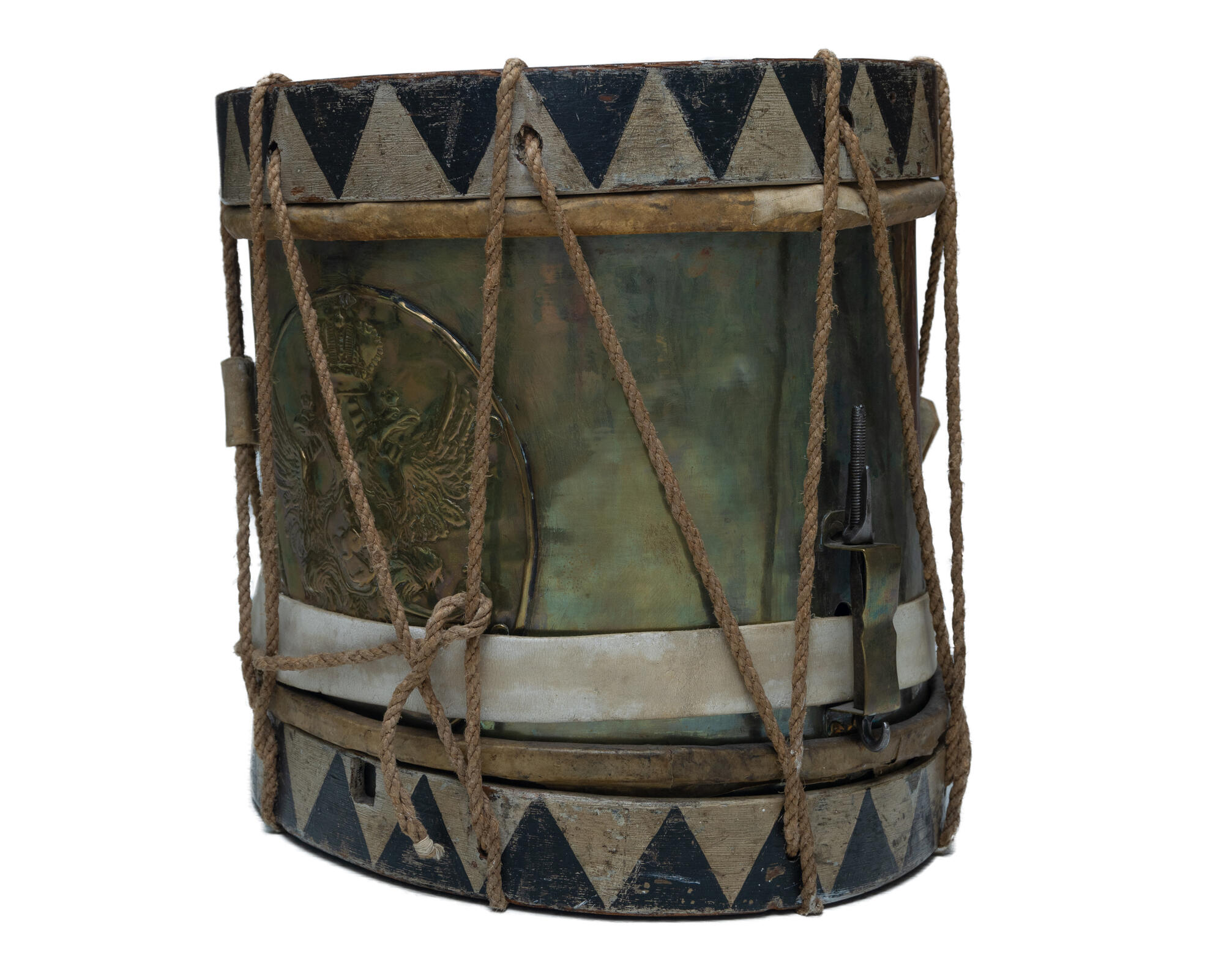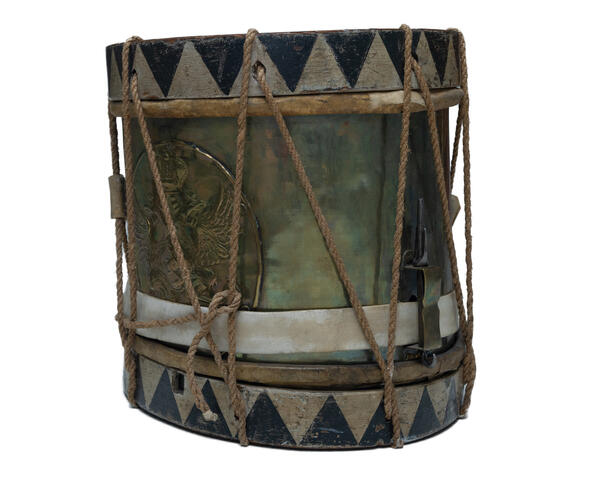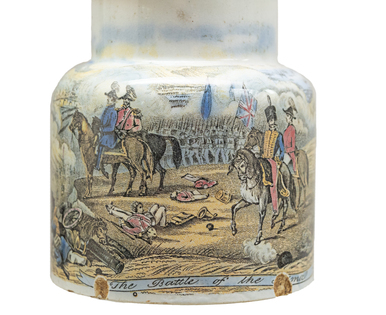The infantry drum from the museum’s collection was made in Russia in the first half of the 19th century. Its hollow cylindrical body is made of brass and decorated with a textured image of the coat of arms of the Russian Empire. The top of the body is covered with dressed calfskin, which is secured with a narrow wooden hoop.
The wide drum hoops are painted with black and white triangles; eight pairs of rope ties are passed through special holes in them. The white leather strap belt attached to the top of the drum body was used to sling the musical instrument around the neck of the drum player.
In the army and navy, drums were used for marching step drills and issuing signals in battles and military exercises. The musical instrument was part of every full military orchestra.
After the development of the linear combat tactics, rhythmic and melodic signals of drums and flutes helped to perform orderly re-formations during combat actions.
Each regiment of the Russian army had a regimental commander, three battalion commanders and 48 company drummers. On their shoulders, they wore an additional cloth patch in the color of the shoulder straps. The sleeve and the left side of the army uniform were embroidered with white, and as for the guard one, they were embroidered with yellow braid. The shako, a military helmet, was decorated with a plume of red feathers or hair.
A drum cloth made of calfskin was attached near the belt under the drum. It was turned the wool-side-out to ensure that the instrument did not come in contact with the player’s legs during the march. The drum hoops were painted with triangles, the sticks were made of birch or other hardwood and painted to match the color of the flagpole.
Most often, the boys and wards following the regiment became drummers. In battle, they usually acted as messengers or helped to carry the wounded from the battlefield. During the attack, the musicians walked behind the lines, and during the march — in front of them. There were cases when the commander died in battle, his death sending the troops into panic: the drummers then signaled the order “troop”, then “offense” and led the soldiers into the attack.
After the Crimean War of 1853–1856, military tactics changed and the importance of drummers in combat units weakened. In 1909, a decree was issued to abolish the usage of drums in military actions. However, already in 1910, by military regulations, the drums were returned to the troops, but this time only as a ceremonial instrument in military orchestras to be used in military shows and parades.
The wide drum hoops are painted with black and white triangles; eight pairs of rope ties are passed through special holes in them. The white leather strap belt attached to the top of the drum body was used to sling the musical instrument around the neck of the drum player.
In the army and navy, drums were used for marching step drills and issuing signals in battles and military exercises. The musical instrument was part of every full military orchestra.
After the development of the linear combat tactics, rhythmic and melodic signals of drums and flutes helped to perform orderly re-formations during combat actions.
Each regiment of the Russian army had a regimental commander, three battalion commanders and 48 company drummers. On their shoulders, they wore an additional cloth patch in the color of the shoulder straps. The sleeve and the left side of the army uniform were embroidered with white, and as for the guard one, they were embroidered with yellow braid. The shako, a military helmet, was decorated with a plume of red feathers or hair.
A drum cloth made of calfskin was attached near the belt under the drum. It was turned the wool-side-out to ensure that the instrument did not come in contact with the player’s legs during the march. The drum hoops were painted with triangles, the sticks were made of birch or other hardwood and painted to match the color of the flagpole.
Most often, the boys and wards following the regiment became drummers. In battle, they usually acted as messengers or helped to carry the wounded from the battlefield. During the attack, the musicians walked behind the lines, and during the march — in front of them. There were cases when the commander died in battle, his death sending the troops into panic: the drummers then signaled the order “troop”, then “offense” and led the soldiers into the attack.
After the Crimean War of 1853–1856, military tactics changed and the importance of drummers in combat units weakened. In 1909, a decree was issued to abolish the usage of drums in military actions. However, already in 1910, by military regulations, the drums were returned to the troops, but this time only as a ceremonial instrument in military orchestras to be used in military shows and parades.



